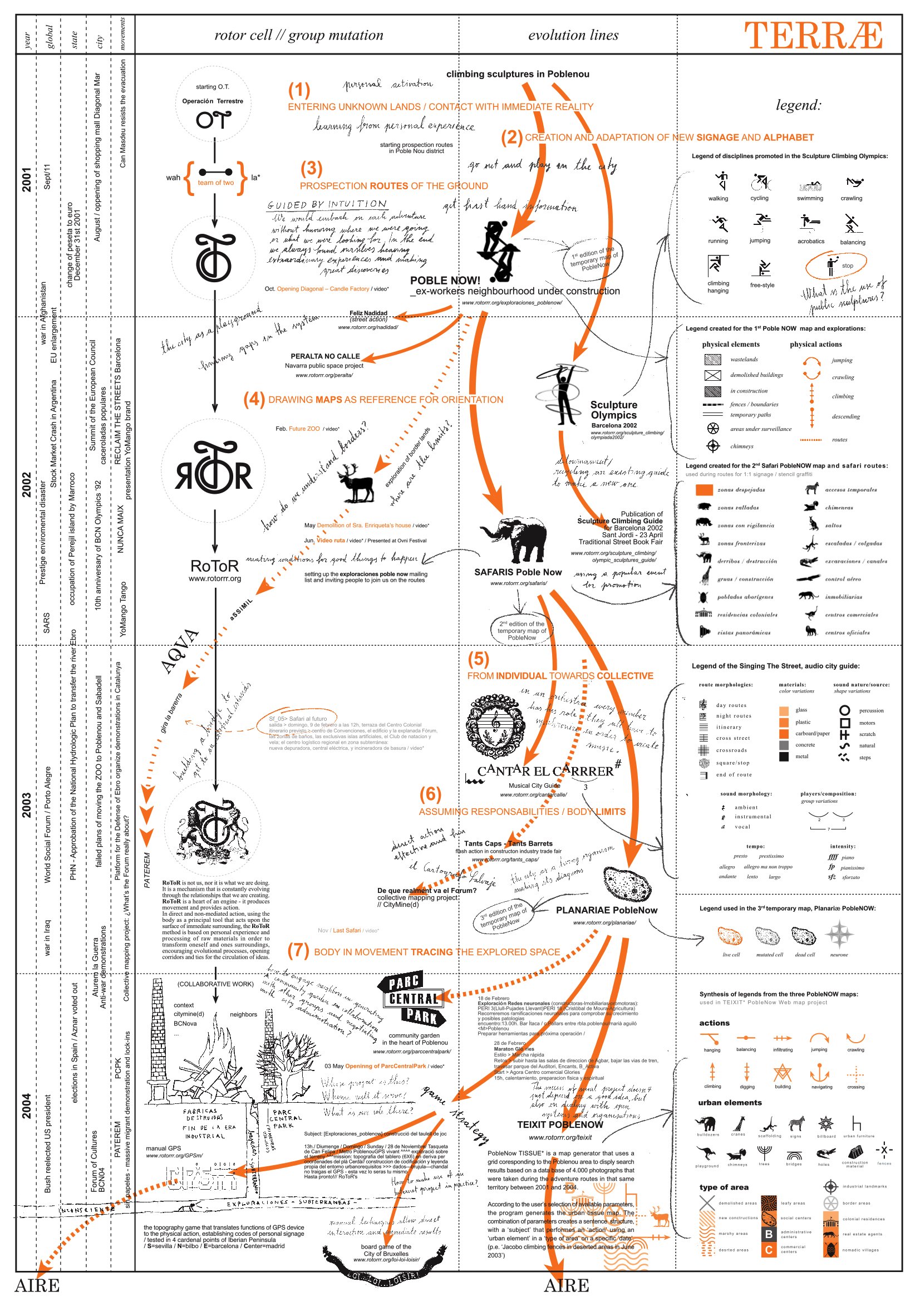We set out to explore our immediate surroundings – the city – in an effort to understand it and incorporate it into our vital processes.
We want to form relationships with the external complexity, foreign to our bodies and our internal processes.
Territories undergoing transformation attract us because they are no longer the thing they used to be, but they haven’t yet become the next thing. Temporarily neutral spaces, battlefields in which global interests clash with local realities. These are places where we can move freely, play, name things our own way and signpost them.
As we embark on our adventure, our own bodies are the interface for exploration. Based on our own experiences, we learn about ourselves and our surroundings.
We draw temporary maps to get our bearings based on what we have learnt: places were a demolished building opens up new paths and shortcuts, obstacles that pop up in the form of new urban interventions. We locate points of access to restricted areas, mark the spots that allow us to go underground or reach different levels, where we can climb, jump, hang, crawl...
At a certain point we find ourselves in the middle of deserted lands on a Safari adventure. Bulldozers appear to us like elephants, cranes rise up like giraffes, the new shopping malls are full of ostriches running around, itinerant real estate agencies stalk their prey like panthers, new hotels stand out like luxurious colonial homes, and in the wake of demolitions gypsy colonies move from one abandoned factory to the next like nomadic indigenous tribes. We organise thematic Safaris to explore the coast line, the leafy areas, the ruins of ancient industrial civilization. We go on a Safari to the Future and see what is going to become of all of this area. This is where the Water story begins, but that's a different chapter...Once we are thoroughly familiar with its ins and outs, we want to understand how everything works together, as though it were a living organism. We want to know how the main systems are connected and ramify, whether they compete or mutually benefit each other. We want to find out what processes are developing in the cells that make up its tissue.
Planariae Poble Now is a simple organism in the process of mutation. Through analytic examinations, we arrive at a diagnosis and prescribe a possible cure.We identify the place where the main artery meets the spine of the nervous system as the spot where the heart should be. But instead of a heart, we find a devastated, abandoned zone. We decide to act there, working with other groups and local residents to resuscitate it by cleaning, planting a garden, playing... by making a community park, ParcCentralPark. But this park won't turn out to be the way we imagined it...From there we move onto other locations, testing different ways of relating to the territory: creating urban audio guides, compiling a new dictionary with a manual GPS, transferring urban conflicts onto a board game....

EARTH # 2001/2004